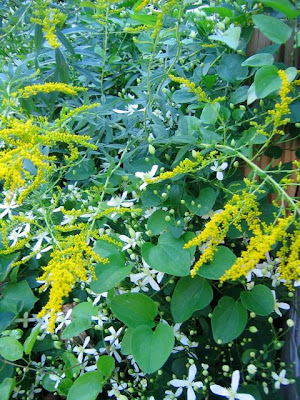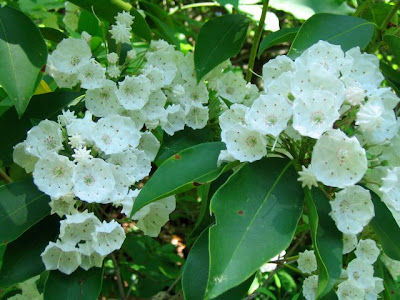Esther M. Sternberg, M.D. is the author of a new book, Healing Spaces: The Science and Place of Well-Being (Belknap Press/Harvard University Press). The book has been reviewed extensively by a broad range of publications and blogs. So rather than write yet another review, I asked Dr. Sternberg for a telephone interview to discuss some the topics specific to landscapes and health. Before joining the National Institutes of Health, Dr. Sternberg was on the faculty at Washington University in St. Louis, MO. She is also the author of The Balance Within: The Science Connecting Health and Emotions, is a regular book review contributor to Science magazine, and lectures nationally and internationally for lay and scientific audiences. You can learn more about Dr. Sterberg on her website, www.esthersternberg.com, and you can watch an author interview here. Many thanks to Dr. Sternberg for this illuminating conversation.
Who was your audience for this book? Everybody! This is a crossover book, meaning that it’s for everyone from scientists to “educated laypeople” – non-scientists, anybody who might want to find a healing space. It’s also for architects, designers, students, and other young people – which is why I used more populist language, metaphors, and examples. One of the crucial steps in bridging different disciplines is learning each other’s language. The book has been favorably reviewed across a wide spectrum of journals, magazines, and blogs, from The Lancet, The Scientist, and New Scientist to the L.A. Times and New York Times, to People magazine – which tells me that the book has been successful in reaching a broad audience.
You refer in your book to Roger Ulrich’s seminal “View from a Window” study that was published in Nature in 1984, which made the scientific community take notice of environmental psychology as more than just a “soft science.” Since then, Ulrich and colleagues have been documenting the physiological effects of people’s experience of nature by measuring blood pressure, heart rate, temperatures, etc. How have recent technological advances in neuroscience changed the ways that research on environmental influences is carried out? There are two kinds of research in this area: First, studying whether something works (and under what circumstances), and second, studying how it works. Ulrich’s ‘View from a Window’ and other clinical studies are the former, and neurosience focuses more on the latter. We may already know that people benefit from being in or looking out onto a garden. But why, and how? Is it the light, the color, the movement, or something else? We can now use technology such as MRIs, PET scans, and other brain imaging to try to answer those questions, and to try to tease out which environmental factors are creating which responses.
Is stress reduction the primary reason that passive experience of nature (rather than active experiences, like gardening or exercise) is restorative? Or is there some other way that it is also beneficial? There are two ways that nature (and other environmental factors) can have beneficial outcomes. First, yes, by reducing stress and its negative effects; stress itself does not cause disease, infections, and so on, but it reduces the body’s resistance to illness and disease, harmful viruses and bacteria. So reducing stress can help foster health and healing. But there’s a second important way that nature works: By enhancing the positive. Positive sensory experiences trigger positive responses and reactions. They turn on parts of the brain that are rich in endorphin receptors (and endorphins make us feel good). We can’t actually measure the level of endorphins in a person’s body, but through brain imaging we can see that parts of the brain that are rich in endorphin receptors become active when there is positive stimulus, such as seeing a beautiful vista, or smelling a fragrant plant, or hearing birdsong. Therefore, we can assume that more endorphins are being released. And perhaps this is why gardens and other natural landscapes are so restorative: They provide a multisensory experience in which more than one positive response is triggered – light, color, sound, scent, touch – all combine to a create a rich positive experience.
Can neurological studies now “prove” theories such as those by Stephen and Rachel Kaplan? They argued that we are less stressed by nature than we are by, for example, being on a crowded city sidewalk, because nature elicits “soft fascination” rather than the extreme concentration needed in less naturalistic environments. Yes, theories like the Kaplans’ make sense on a neurological level, because different parts of the brain are activated when you are in a threatening vs. a non-threatening “focused attention” situation. A non-threatening situaton is less emotionally charged, thus requiring less vigilance. In the book, I use the analogy of the maze vs. the labyrinth. The maze is stressful. We don’t know how to get out, we have too many choices, we might get trapped inside – the body’s stress hormone axis [see pg. 98] kicks into high gear. But with a labyrinth, you are not faced with stressful choices. You enter and exit through one point, you can see the whole thing, and you are led on a simple, calming path.
Has any research been done yet on the effects of people walking labyrinths? Not yet. Probably the closest is Eduardo Macagno and Eve Edelstein’s study at UCSD using StarCAVE technology (virtual reality) combined with measuring brain activity through EEGs to study how people negotiate space. In one study, they found that in navigating a building without the usual landmarks, people who could see light and shadow were still able to navigate. When those clues were taken away, people lost their ability to find their way. This kind of study may be able to help with discovering better wayfinding clues for hospitals and nursing homes, even for people with Alzheimer’s and other forms of dementia.
All of it is fascinating and it’s very important for general health, for maintaining health, and for personal health. A lot of data out there in neuroscience research tells us that place matters. We are affected by our environment, and if we manipulate our surroundings to reduce stress and to provide positive responses, we will benefit.






